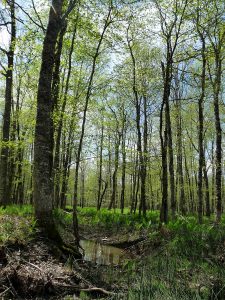Nova Scotia was a mosaic of different forest associations that reflected differences in rock, soil, climate and First Nations management. While a large portion of the landscape was covered with Red Spruce, the Atlantic coastline was boreal with Black and White Spruce, and well-drained uplands of Cape Breton and the Cobequids and fertile floodplains were hardwood associations. These hardwoods are northern extensions of the Appalachian Deciduous Forest and they change with climate change. The fertile floodplain portion of this Forest contains various rare elements and floodplain rehabilitation at a provincial level should be part of a continental plan to facilitate and conserve biodiversity as species distributions change and adapt to new habitats. At a local level, forest rehabilitation along rivers has the added benefits of mitigating flooding, improving water quality and wildlife habitat, and stimulating recreation opportunities
Speaker: Nick Hill, Fern Hill Institute for Plant Conservation
Place: Community room of the New Glasgow Library, 182 Dalhousie St.
Time: 6:30 p.m.

